Stressed? Anxious? Depressed? You’re Not Alone
The COVID 19 pandemic is not only a danger to our physical health, it a danger to our mental health as well.
As the COVID-19 pandemic sweeps the globe bringing uncertainty, fear, loss, isolation, and hardship, individuals find themselves in a time of collective mental distraught and trauma.
More than 42% of people surveyed by the US Census Bureau in December reported symptoms of anxiety or depression in December, an increase from 11% the previous year. Data from other surveys suggest that the picture is similar worldwide (see ‘COVID’s mental stress’).
The stress of COVID is having a detrimental impact on society. Anxiety and depression were already at record levels before the pandemic but mental strain of the Virus, lockdowns, isolation, and fear have fueled the flames of stress and despair.
In this blog I’d like to share information on how natural over the counter supplements can help counter the effects of stress, anxiety and depression.

Traditional And Natural Approaches For Anxiety and Depression
Psychiatric medications are among the most widely prescribed and best-selling class of drugs in the United States. In 2010 (last year on record), Americans spent $11.6 billion on antidepressants, according to IMS Health, which tracks prescription drug sales.
By 2014, about one in every eight Americans over the age of twelve take antidepressants on a regular basis, this according to a report released from the U.S. Centers for Disease Control and Prevention.
The researchers noted “one-fourth of all people [surveyed] who took antidepressants over the past month reported having taken them for ten years or more.”
Antidepressant use increases with age. These medications are used by 16.6 percent of people ages 40 to 59, 7.8 percent of those ages 20 to 39, and 3.4 percent of adolescents ages 12 to 19.
Women are twice as likely as men to take antidepressant medication (16.5 percent compared with 8.6 percent). Women are more likely than men to take antidepressants in every age group.
The number of patients taking antidepressants continues to rise, despite a study published in Frontiers in Psychiatry concludes that “antidepressants are largely ineffective and potentially harmful.” The researcher, Michael P. Hengartner at the Zurich University of Applied Sciences in Switzerland, conducted a thorough literature review focusing on randomized, controlled trials—the gold standard of evidence-based recommendation.
According to Hengartner, research funded by the National Institute of Mental Health found no differences between antidepressant efficacy and placebo—and this was despite the research design, using randomized controlled trials, the gold-standard method. Numerous studies now show that between 19% and 70% of those taking antidepressant medications do just as well by taking a placebo or sugar pill.
While patients are attempting to correct their mood disorders with prescription drugs that may or may not be more effective than a sugar pill, all of these drugs have potential –sometimes serious – side effects. Prozac alone has been associated with over 1,734 suicide deaths and over 28 000 adverse reactions.
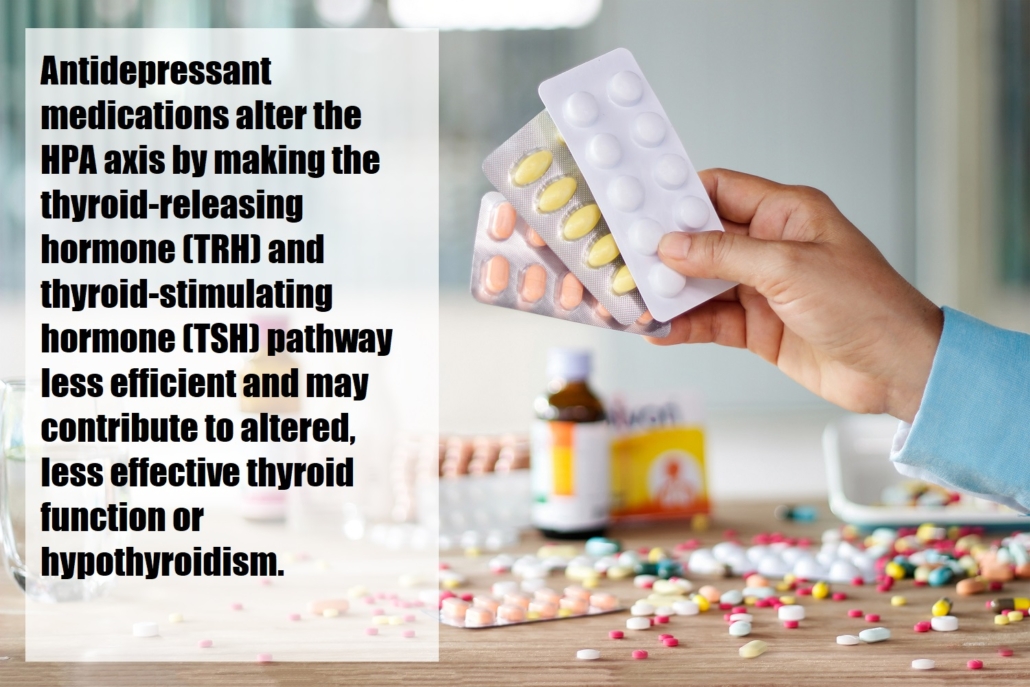
Antidepressants also divert the amino acid L-tyrosine, the precursor for the brain chemicals dopamine and norepinephrine, from converting into the thyroid hormone T4. This is a bit ironic, since low thyroid function is a major cause of depression.
Prescription antidepressants can cause depression, anxiety, addiction, suicidal tendencies, tremors or involuntary muscle spasms, and senility. Yes, prescription antidepressants and antianxiety drugs can and do cause depression and anxiety.
Selective serotonin re-uptake inhibitors (SSRIs), such as Zoloft (sertraline), Paxil (paroxetine HCl), Celexa (citalopram), Prozac (fluoxetine), and Luvox (fluvoxamine), work by increasing the brain’s use of the neurotransmitter serotonin. (Serotonin deficiency is linked to anxiety, depression, lowered pain tolerance, poor sleep, and mental fatigue.) Cymbalta, Savella, Effexor, Fetzima, and Pristiq are selective serotonin and norepinephrine re-uptake inhibitors.
Common side effects of prescription antidepressants may include anxiety, depression, headache, muscle pain, chest pain, nervousness, sleeplessness, drowsiness, weakness, changes in sex drive, tremors, dry mouth, irritated stomach, loss of appetite, dizziness, nausea, rash, itching, weight gain, diarrhea, impotence, hair loss, dry skin, chest pain, bronchitis, abnormal heartbeat, twitching, anemia, low blood sugar, and low thyroid.
DON’T STOP ANY MEDICATIONS WITHOUT CONSULTING YOUR PHYSICIAN.
Benzodiazepines
These medications are usually used as anti-anxiety medication, and include Xanax (alprazolam), Klonopin (clonazepam), Ativan (lorazepam), Restoril (temazepam), BuSpar (buspirone hydrochloride), Tranxene (clorazepate dipotassium), Serax (oxazepam), Librium (chlordiazepoxide), Tegretol (carbamazepine), Valium (diazepam), Trileptal (oxcarbazepine), Seroquel (quetiapine), Risperdal (risperidone), and Symbyax (olanzapine and fluoxetine HCl).
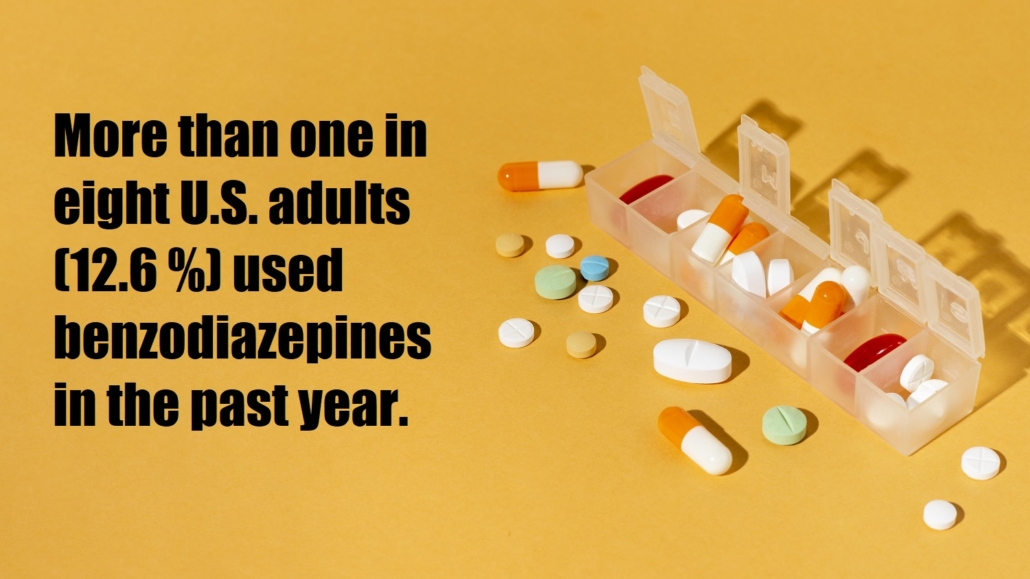
Benzodiazepines are addictive, and patients build up a tolerance so that the drugs eventually lose effectiveness as a sleep aid. Addiction may occur in as little as two weeks.
The big problem with these medications is the potential side effects, many of which mirror the symptoms of fibromyalgia. And they don’t promote deep, restorative sleep, so they are definitely not worth the risk. Benzodiazepines depress the central nervous system and act on the neurotransmitter GABA, a calming chemical that transmits messages from one cell to another. So directly or indirectly, these drugs influence almost every brain function and most other bodily systems, including functions of the nervous, neuromuscular, endocrine, and gastrointestinal systems. It’s no wonder their side effects are so severe.
Prescribing benzodiazepines for poor sleep, restless leg syndrome, sleep apnea, and other fibro-related conditions should be considered malpractice. These drugs are dangerous, addictive, and a poor choice when there are other drugs and natural approaches, that are as effective without the risky side effects.
Potential side effects of benzodiazepines: Poor sleep; seizures; mania; depression and suicidal thoughts; tinnitus (ringing in the ears); transient amnesia; dizziness; agitation; disorientation; low blood pressure; nausea or vomiting; fluid retention; muscular incoordination and tremors; sexual dysfunction; prolonged drowsiness or a trance-like state; fatigue; headaches; body aches and pains; chills; runny nose; cough; congestion; difficulty breathing; feelings of discouragement, sadness, or emptiness; diarrhea; difficulty swallowing; vision and voice changes; and a host of others.
The crippling side effects and addictive nature of these drugs have been known for at least forty years, yet doctors continue to prescribe them at an ever-increasing rate, especially for seniors.
A mouth-dropping 50 percent of all women sixty and older will be prescribed a benzodiazepine drug. And since addiction often occurs within four weeks of starting these drugs, the majority of these folks are now dependent on them.
Tolerance to the hypnotic (sleep) effects of these drugs may occur within one week. Symptoms of tolerance are identical to drug-withdrawal symptoms and may include anxiety, panic, severe insomnia, muscle pain and stiffness, depression, suicidal thoughts, rage, heart and lung problems, and agoraphobia (extreme fear of leaving home or being in public or crowded spaces).
Tragically, only 10 to 30 percent of people are able to successfully stop taking these drugs. The rest are addicted for life.
WARNING: DO NOT STOP TAKING ANY OF YOUR PRESCRIPTION MEDICATIONS WITHOUT CONSULTING YOUR DOCTOR
WHAT ARE NEUROTRANSMITTERS?
Balance Your Neurotransmitters To Feel Better
Neurotransmitters are brain chemicals that help relay electrical messages from one nerve cell to another. They are produced from amino acids (which we get from protein foods); vitamins B6, B3, and C; and the mineral magnesium. Amino acids, then, are the raw nutrients needed to manufacture the neurotransmitters.
Neurotransmitters help regulate pain, reduce anxiety, promote happiness, initiate deep sleep, and boost energy and mental clarity. Excitatory (stimulating) neurotransmitters include epinephrine and norepinephrine (adrenaline). Inhibitory (relaxing) neurotransmitters include serotonin and gamma-aminobutyric acid (GABA).
Serotonin, from the amino acid tryptophan or its byproduct 5-hydroxytryptophan (5-HTP), elevates mood, reduces food cravings, increases pain threshold, improves mental clarity, reduces IBS symptoms, promotes deep sleep, relieves tension, and calms the body.
Dopamine and norepinephrine are synthesized from the amino acid phenylalanine. They increase mental and physical alertness, reduce fatigue, and elevate mood.
Epinephrine, made in the brain as well as the adrenal glands, is also synthesized from the amino acid phenylalanine and helps increase energy and boost mental clarity. Low levels cause depression and fatigue. Prescription medications like Wellbutrin and Effexor attempt to boost the brain’s levels.

- Serotonin, created from the amino acid tryptophan or 5 hydroxytryptophan (5HTP), elevates mood, reduces food cravings, reduces pain, increases mental clarity, reduces IBS symptoms, promotes deep sleep, relieves tension, and calms the body.
- Dopamine and norepinephrine are synthesized from the amino acid phenylalanine. They increase mental and physical alertness, reduce fatigue, and elevate mood.
- Epinephrine is a neurotransmitter that helps increase energy and boost mental clarity. When low, it causes depression and fatigue. Prescription medications like Wellbutrin and Effexor attempt to boost the brain’s level of epinephrine. However, a person can easily increase his epinephrine levels naturally.
- Gamma-aminobutyric acid (GABA) is a tripeptide made from three amino acids. It has a calming effect on the brain similar to that of Valium and other tranquilizers without the side effects. GABA PLUS, used in combination with the B vitamins niacinamide (a form of B3) and inositol, can alleviate anxiety and panic attacks. Many of my patients are surprised by the effectiveness of GABA PLUS in treating their anxiety and panic attacks.
Neurotransmitters that cause excitatory and stimulating reactions are known as catecholamines. These include epinephrine and norepinephrine (adrenaline). Inhibitory or relaxing neurotransmitters include serotonin and gamma-aminobutyric acid (GABA).
AMINO ACIDS
Amino acids function as the building blocks of proteins. There are 20 amino acids. Nine are known as essential amino acids. They can’t be made by the body and must be obtained from our diet. Non-essential amino acids can be manufactured from within our own cells.
ESSENTIAL
- isoleucine
- leucine
- lysine
- methionine
- phenylalanine
- threonine
- tryptophan
- valine
- histadine
Non Essential:
- glycine
- glutamic acid
- arginine
- aspartic acid
- alanine
- proline
- serine
- tyrosine
- cysteine
- glutamine
- asparagine
Amino acids are involved in every bodily function. They are the raw materials for the reproduction and growth of every cell. They are in every bone, organ (including the brain), muscle, and most every hormone.
Individual amino acids are joined together in sequential chains to form proteins. Protein, the body’s building material, is essential to every cell and makes up our muscles, hair, bones, collagen, and connective tissue. Enzymes are protein molecules that coordinate thousands of chemical reactions taking place in the body. They are essential for breaking down and digesting our food.
Amino acids can occur in two forms: D-form and L-form, which are mirror images of one another. The L-form is available in the foods we eat and is considered the more absorbable. D-forms can be created by bacteria, tissue catabolism, or synthetic means.
Most D-form amino acids are not available for protein synthesis and can be detrimental to normal enzyme functions. DL-phenylalanine, however, is the exception. DL-phenylalanine is good for you, inhibiting the breakdown of endorphins and enkephalin, which elevate mood and help block pain. These are the same chemicals released during strenuous exercise to create the “runner’s high.”
HOW TO SUPPLEMENT WITH AMINO ACIDS
Always use the L forms of an amino acid when supplementing. Single amino acids are available over the counter as nutritional supplements. They can be taken as a blend to shore up any nutritional deficiencies or taken individually in order to produce specific reactions.
It’s best to take single amino acids on an empty stomach, 30 minutes before or 1 and a half hour after eating. Individuals with malabsorption syndrome, irritable bowel, leaky gut, and chronic illnesses are wise to take an amino acid blend in addition to any single amino acids they may be taking.
I’ve treated thousands of patients with mood disorders and have been using amino acid replacement therapy for several years. I’ve found this approach to be far superior to prescription medicines (in most cases) for treating mild to moderate mood disorders. I’ve found very few problems with mixing the recommended supplements with prescription anti- depressants.
My patients if needed combine the appropriate natural amino acids with their prescription medications. If you have any concerns, always consult your doctor.
NEVER STOP taking your prescription medications without consulting your physician.
I’ve developed a brain function questionnaire to help you determine which amino acids you need. You can use my Brain Function Questionnaire to see which if any amino acids or neurotransmitters you’re low in. –> https://yourfibrodoctor.com/brain-function/
THIS REALLY WORKS!
Darlene Helms
I’ve been following Dr. Murphy’s work regarding fibromyalgia for years but he didn’t have products at the time. Just received this product yesterday and took it last night. I honestly didn’t think it would work. I am on anxiety meds now and been on them for years. I have tried to get off of them for years. I am praying this product is going to be one. It did calm me down and it was within 15 to 20 minutes and I didn’t take my anxiety meds last night. I feel like God has answered my prayers through Dr.Murphree and his products. This works!
PEACE OF MIND
*****
Patricia Swick
This is the only product I have found that really does calm the brain. When you are lying in bed and your mind is racing, stuck in that stressful loop, this product is the answer!
RACING MIND NO MORE
*****
Peggy Lamb
This is one of my favorite products because it has calmed my racing mind due to a reaction from a medication I took years ago. I have been able to increase doses on high stress days without any side affects. It helps me with my anxiety and ultimately with blood pressure. Would highly recommend it.
*****
GABA Plus-is an all-natural blend of calming nutrients which work within minutes to calm tension, stress and anxiety. It won’t make you feel dopey, sleepy or tired. It can be safely combined with other medications.
GABA Plus provides essential synergistic nutrients to improve moods, stress and anxiety. GABA, is the major inhibitory or calming neurotransmitter. The amino acids taurine and L-glycine work with GABA to provide the synergistic ingredients for quick, effective calming action. The nutrient inositol helps increase the release of the calming neurotransmitter serotonin.
“5 HTP has been a game changer for me! I am elated about finally being able to get restorative sleep!!! I feel refreshed and more energetic upon waking up every morning! I have been taking the Fibro Jump Start pack for about three months This vitamin and supplement protocol is truly a blessing to me! Thank you Dr. Murphree!”


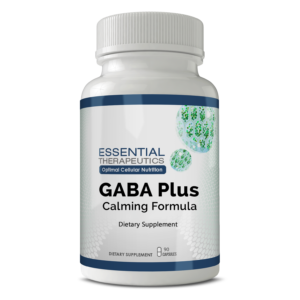
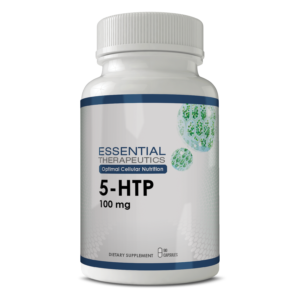
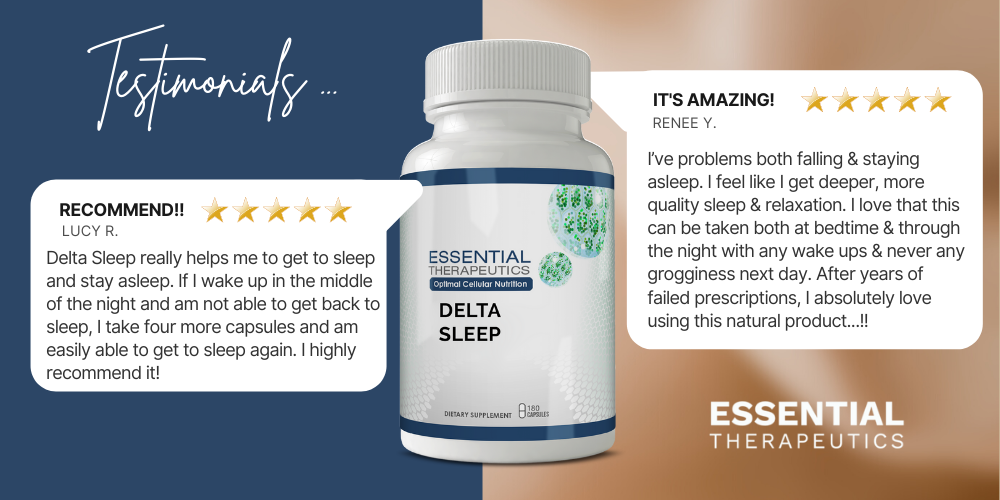


Leave a Reply
Want to join the discussion?Feel free to contribute!